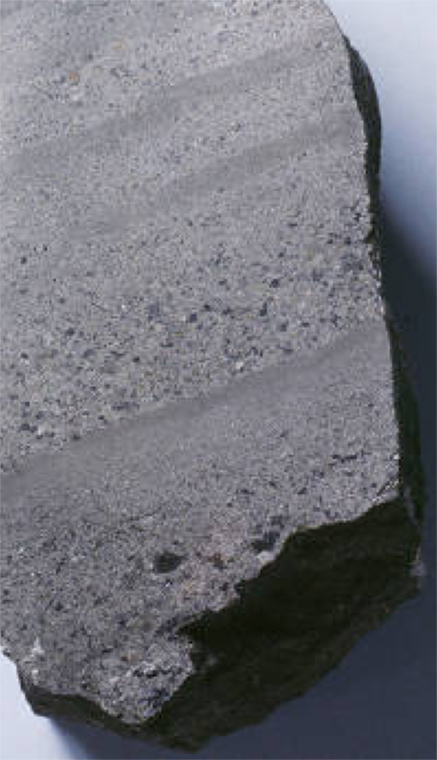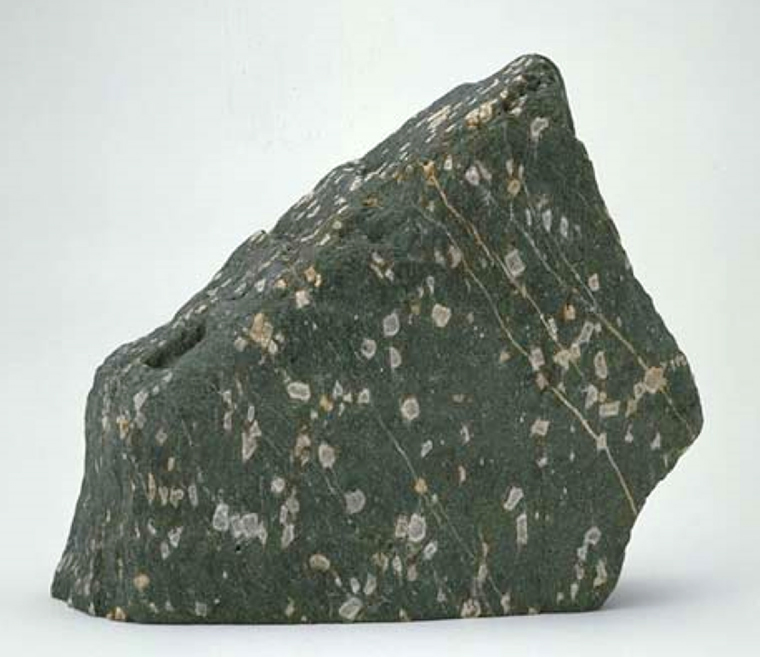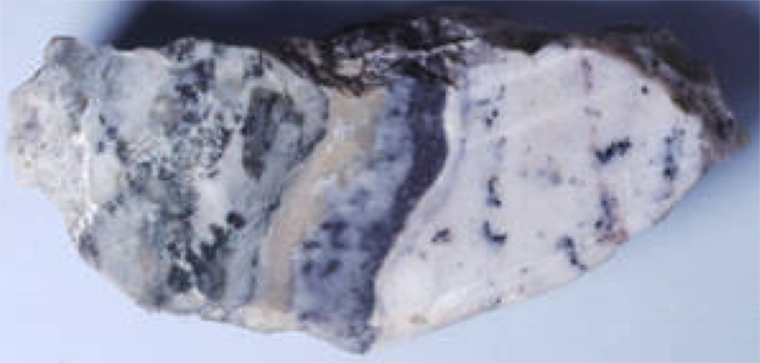

Department of Petrology and Mineral Deposits
Since the establishment of the Geological Institute, Faculty of Science, in the 1870s, the research at this department has focused on petrology and mineral deposits mainly in Japan, leading to a large collection of scientific specimens. The petrology section consists of around 14,000 specimens of igneous and metamorphic rocks and rock-forming minerals, including 780 chemically analyzed rock-forming mineral specimens. The mineral deposit collection preserves ore specimens—for example, domestic and overseas representative ores from cupriferous pyritic deposits, Kuroko deposits, manganese bedded deposits, skarn-type deposits, and vein-type deposits; in particular, the first three types of deposits in Japan were intensively studied by Professor Takeo Watanabe (1907–1986), one of the founders and the first director of UMUT, and his followers. Based on studies of these specimens, it is now widely known that the syngenetic deposits were formed on the sea floor due to submarine volcanic hydrothermal activities.
 The Kuroko ore specimen from the Ainai mine in Akita, Japan provided an important clue for the Kuroko formation process, as evidenced by remarkable sedimentary structures. |
 Sambagawa metamorphic rock from Asemigawa, Kochi, Japan. This epidote amphibolite was formed at 40–50 km depth, showing crystallization under rheological flow. |
 A skarn deposit specimen showing contact between marble and kotoite. This specimen was collected by Prof. Takeo Watanabe (1907–1986), the first director of UMUT. |
Back to the Collection Division